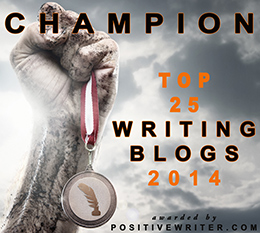LINKING DETAILS AND EMOTIONS - Take a childhood home, for instance. Describe the place and let your character experience the feelings the place evokes. Together, details and emotions make a place a living thing.
MEASURING CHANGE OVER TIME - Tangible things in your scene can bring out passage of time, such as ice cream trucks, crew neck sweaters, leaf blowers, Popsicles, swim suits, scarfs, snow plows, etc. Of course, these things can evoke emotions as well, to enhance the experience of your character.
HISTORY IS PERSONAL - Historical detail is a good thing, but a story doesn't have to be chock full of it. Creating a sense of the times is not just about the details (or even coupling them with emotions). The times are also enhanced by infusing a character with strong opinions about both the details and the emotions. What does the character feel about historical events? What shapes his views?
SEEING THROUGH CHARACTER'S EYES - Use different POV characters to "see" the setting. Each character's personality will see with different emotions and from a different perspective.
CONJURING A MILIEU - Yeah, I had to look that word up. (*blush*) It means a social or cultural environment. It is not necessarily a "place", but something like the world of pro-baseball players, or the life of stage actors, etc. This is what Maass said about it: "A milieu exists not in a time or place, but in the mind and hearts of the characters who dwell in it. Their memories, feelings, opinions, outlook and ways of operating in their realm are what make it real."
SETTING AS A CHARACTER: A setting may participate in the story, like a blizzard, drought, or nature. It can be a place of significance, like The Boardwalk on Coney Island. It could be the place where your husband proposed and you spend every anniversary at. You make it real by making it significant to the character.
As always, Maass gives many examples of each point from many different author's works. It is very helpful to see how others are doing it.
Setting is one of my weak points in writing. I like dialogue and action best, so all the details slip me by. I am trying to incorporate setting with each new scene, but I am definitely a minimalist. :)
Do you love to build your story's world? If not, how do you make yourself write the setting? What tools or rituals do you use?
**Originally posted at Sherrinda.com on 6/22/09
**Photo by schwoaze at pixabay.com
**************************************************************
Sherrinda Ketchersid is a born and bred Texan, preacher’s wife, mother of 4 children, and works part-time as a bookseller at Amazon. With the children grown and out of the house, she weaves tales of fierce knights and their ladies in a time where men were warriors and women had to be strong enough to keep them in check.
After taking time off from writing, she has returned with a new motto in place to spur her on. “Writers write. Everyone else makes excuses.” ~Jack Bickham. No excuses this time. She is weaving her love of romance with history to bring joy and the hope of love to those who may one day read her stories. Her first book, tentatively The Lady's Masquerade, will release April 2019.
You can connect with her through:
Personal blog: sherrinda.com
Twitter: @sherrinda




















2 comments:
Hi Sherrinda, I've been looking for a new craft-of-writing book and I think Donald Maass may be it. I've been accused of over-writing and over-describing, but description alone doth not a setting make. I'm working on better integrating setting with my characters. I use a lot of physical objects. In my recently-contracted Oregon Trail story one of the physical objects was the heroine's last ball gown from her former life, which she finally rips up to bind the hero's broken ankle near the end. In my not-yet-contracted Christmas romance it's the two-inch-thick loose-leaf notebook the hyper-organized heroine uses to control the Christmas Festival and keep chaos at bay. (Of course we all know how well THAT'S going to work.) I love so-called "sacred objects" and use them a lot.
I had to create a town for the Christmas romance and that was fun. I melded details from several small New Hampshire towns -- a doughnut shop from this place, a stone library from that one, a Five and Dime from a third.
Setting is just another tool in our toolbox, and one worth knowing how to do.
Thanks for a great and informative post,
Kathy Bailey
Kaybee! I can't believe I am just now seeing this comment. Forgive my tardiness in replying. I confess to not knowing about the sacred object ploy! Where have I been??? What a great idea. I am still struggling with setting while I edit. It just doesn't come naturally for me. I keep hearing my editor's voice..."What is your heroine seeing? When she walks in the room or goes outside, what does she see?" I hope it becomes more natural for me the more I write.
I hope your enjoy Donald Maas's book. It's a good one. Do you have a book to recommend me?
Post a Comment